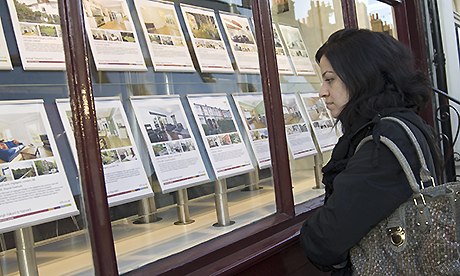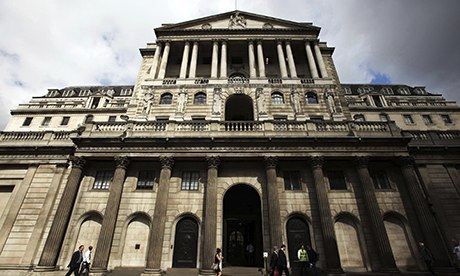 This article by Cambridge News on November 12th, 2013 tells us the increase of price houses surge to an 11 year high.
This article by Cambridge News on November 12th, 2013 tells us the increase of price houses surge to an 11 year high.The number of surveyors reporting house prices lifting across the country has surged to an 11-year high as the Government's new Help to Buy scheme fuels "soaring" demand from buyers.
The Royal Institution of Chartered Surveyors (Rics), which released the findings for October, said urgent action must be taken to tackle the problem of demand outstripping the supply of homes for sale, which is "nowhere near" the levels needed to cope.
Sales volumes are running at their highest levels in more than five and a half years as more people flood into the market to snap up properties, its latest UK survey found.
Rics said that nearly three-fifths (57%) of surveyors reported price rises during the month, the highest percentage since June 2002, reflecting the imbalance between supply and demand.
Over the three months to October, surveyors sold just over 20 homes typically, the highest average since February 2008.
Looking ahead, surveyors said they expect house prices and sales volumes to edge higher in the next three months.
Meanwhile, demand for rented property is increasing at its slowest pace in over a decade as more people make the jump on or up the property ladder, Rics reported.
A balance of 11% of those surveyed reported rises in interest from potential tenants in October, the lowest proportion in more than 10 years.
But Rics said that while the new phase of Help to Buy - to give borrowers with deposits as low as 5% a helping hand to buy a new-build or existing home - is "widening the net" of people who can get mortgage access, surveyors across the UK are reporting a "problematic" lack of new instructions from sellers.
Rics said that as "soaring demand" pushes prices higher, almost every region is reporting an increase in sales, demonstrating that recovery is "spreading beyond the traditional economic powerhouses of London and the South East".
The new phase of the Government's Help to Buy scheme, which offers state-backed mortgages to people with deposits as low as 5%, was fired into action last month after the start date was brought forward from January.
State-backed lenders Royal Bank of Scotland (RBS), NatWest, Halifax and Bank of Scotland are already offering mortgages under the scheme and other major lenders including HSBC and Santander have confirmed plans to come on board at a later date.
Simon Rubinsohn, Rics chief economist, said: "A greater willingness by lenders to increase loan to values on mortgage products allied to the Help to Buy scheme has meant that more and more first-time buyers are in a position to enter the market.
"In spite of this, the amount of homes currently up for sale is still nowhere near enough to keep up with demand and, in order for the market to function correctly, this imbalance urgently needs to be addressed.
"House building starts have picked up recently but we are still well behind in terms of the amount of properties needed."
Fears have been raised that the upward pressure on house prices could lead to a "bubble", with borrowers over-stretching themselves. Ultra-low interest rates and a string of Government schemes are currently helping to keep mortgage payments relatively affordable.
Rics recently suggested that the Bank of England should use its powers to limit house price increases to 5% a year to remove the "froth" from price booms.
It said that an annual increase of around 5% could trigger caps on how much people could borrow relative to their incomes or the value of the property.
Recent figures from the Department for Communities and Local Government (DCLG) showed that house builders in England are starting more new properties than at any other time in the past three years.
But housing charity Shelter has previously warned that the country is still building less than half the number of new houses it needs each year to tackle the ''chronic shortage''.
Council of Mortgage Lenders chairman Nigel Terrington warned last week that the housing market risks becoming "addicted" to the Help to Buy scheme unless a clear exit strategy is set out. Mr Terrington said that Help to Buy must not "morph" into the UK's version of United States mortgage giant Fannie Mae.
Mr Terrington said of Help to Buy: "It should be a time-limited intervention to correct what is seen by the Government as a temporary failure in the market to provide high loan-to-value mortgages in quantity. It must be a temporary fix - not a permanent feature."
Housing minister Kris Hopkins said: "We are pulling out all the stops to get Britain building."
He continued: "Already, we're well on track to deliver 170,000 new affordable homes by 2015, and our plans to invest £19.5 billion public and private funding over this spending review, and £23 billion in the three years after that, will help towards the fastest rate of affordable house building for two decades.
"Housing starts are now a third higher than at the same time last year and it is clear house building will remain a critical part of our economic recovery.
"In addition, our Help to Buy schemes will help thousands of aspiring homeowners buy new homes with a fraction of the deposit they would normally require - helping to boost the housebuilding industry even further as well as supporting responsible lending.
"On average households have asked to borrow around £155,000 for houses worth about £163,000, which is below the UK average price of £247,000."
Roger Harding, director of communications, policy and campaigns for Shelter, said: "Despite Government rhetoric, Help to Buy simply isn't affordable for the vast majority of people on average incomes in large swathes of the country, while city economists are warning that it risks raising house prices further.
"Apart from high earners and those lucky enough to access hefty help from the bank of mum and dad, the chance of a home of their own continues to slip further and further out of reach for many young people and families.
"If the Government is really serious about meeting people half way and helping them to realise their aspirations, it needs to take decisive action to tackle our shortage of affordable homes."
Article Source: http://www.cambridge-news.co.uk/National-News/Housing-demand-soaring-surveyors-2-7972640.xnf
FREE £197 Property Download "5 Instant Ways to Raise Finance For Your Property Deals"http://tiny.cc/B-FreeGiveAway











